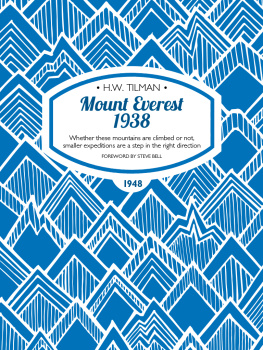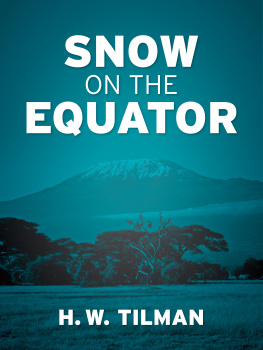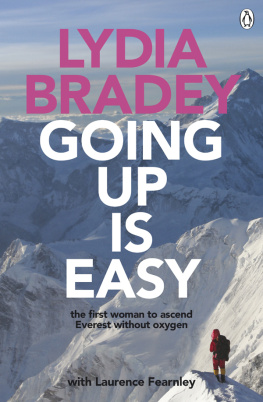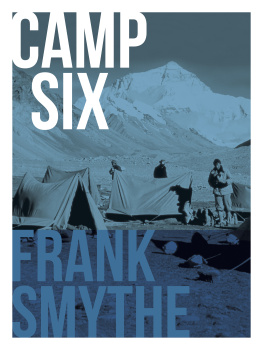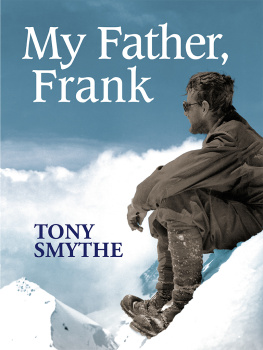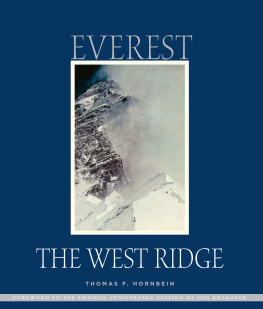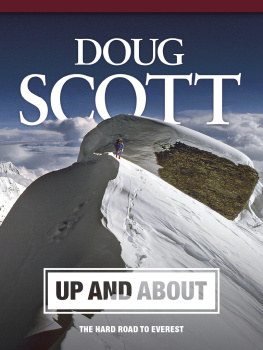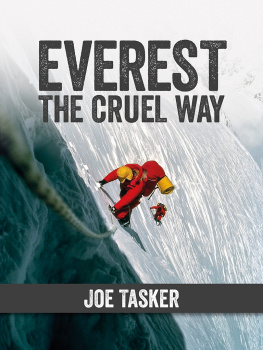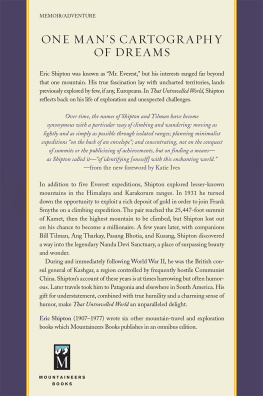H.W. Tilman
Still, I think the immense act has something about it human and excusable; and when I endeavour to analyse the reason of this feeling I find it to lie, not in the fact that the thing was big or bold or successful, but in the fact that the thing was perfectly useless to everybody, including the person who did it.
Foreword
Steve Bell
Still reeling from the Great War, the world in 1938 was blindly rushing into another awful conflict. The fervour of nationalism reached into unlikely corners, fuelling the dream of conquest in whatever form it could find. During this dark period sandwiched between the bloodiest conflicts in human history, mountaineering was one of those corners. While the British obsessed on Everest, the Germans eyed Nanga Parbat; and, to Hitlers delight, four of his master-race conquered the North Face of the Eiger.
The 1938 expedition was to be the last of the pre-war Everest expeditions. Thus far the mountain had thwarted all attempts to climb it. Previous expeditions (1922, 1924, 1933 and 1936, all British) had involved large cumbersome teams with a military style of leadership. Theyd failed, so for 1938 a different tactic was employed.
Bill Tilman was selected by the Mount Everest Committee to lead Britains fifth expedition. He was a hard man in a harder world, a veteran of the Battle of the Somme where 57,000 young Britons perished on its first day; over the following months, a million more were to follow. After the war, Tilman sought adventure in other theatres. By the time he sat down to write about the 1938 expedition, hed fought in another long and terrible war.
Climbing a mountain, even one as high as Everest, would have been a picnic compared to what he and his comrades experienced in battle. We should not forget that mountaineering, even on Everest, is not war but a form of amusement whose saner devotees are not willing to be killed rather than accept defeat. The enemyavalanches and crevasses, cold and storms, sickness and thieveswould have seemed a relatively benign foe to them, yet the hardships they faced would make most modern climbers choke on their energy gels. Despite not reaching the summit, what they and the other pre-war climbers achieved leaves the present day Everest summiteer wanting.
Yet in other ways there are surprising similarities to the modern era. Tilmans observations and opinions on the media, publicity and diet apply equally today. But most striking is his adherence to the concept of light weight, low cost expeditions. He and his companion Eric Shipton were the original exponents of the light weight, low impact ideal that has been so readily embraced in the modern mountaineering ethic. With similar prescience, Tilman decries the notion of mountain tourism:
... these protests have been written in the hope that promoters of Himalayan expeditions will think twice about the use of innovations designed to soften the rigours of the game or lessen the supremacy of the mountains. Of the many strange tricks that man plays before high heaven that would be one of the strangest, one which if it did not make angels weep would strike moralists dumb, if our efforts to subdue the mightiest range and the highest mountain of all should be the means of losing us our mountain heritage.
As the leader of Britains first commercially guided ascent of Everest (1993), I have to admit that Tilmans sentiments sit uneasily with my conscience. But the world is now a very different place to what it was between the great wars of the twentieth century, and Everest has changed too. Although its unclimbed lines still present great challenges, its formerly unreachable summit has become a destination for high altitude tourists.
Tilman and his contemporaries will forever be part of our mountain heritage. The lessons they learned set the stage for the first ascent of Everest, which blazed the trail that so many now follow. It is perhaps a kindness that the taciturn and ascetic Bill Tilman is no longer here to see the circus that Everest has become; his angels might weep indeed. But we must remember that whatever the future holds for the worlds highest mountain, it will never diminish the mighty endeavours of its earliest explorers. We are fortunate that they included gifted writers and chroniclers, who provide us with a precious glimpse of Everest when its summit was still untrodden.
Bill Tilman was reputed to be a reserved man of few words. In this book, his words spill onto the page like a stream that flows from the heart of a glacier. For anyone with the vaguest interest in Everest and exploration, it is wonderfully invigorating.
Steve Bell
March 2016
Authors Preface
This account of the 1938 Mount Everest Expedition is published with the consent of and on behalf of the Mount Everest Committee, but for the views herein expressed the author alone is responsible. Some questionable publicity recently given to new methods to be applied to the problem of Mount Everest points to the need for the plea which is made here for sanity and a sense of proportion.
The plates are from photos taken by members of the party. I have not attributed them individually, but the majority, and certainly those of outstanding merit, may be safely regarded as those of Mr F.S. Smythe.
I have to thank Dr T.G. Longstaff (President of the Alpine Club) and Dr R.J. Perring of Ryton for reading and criticizing the first draft and R.T. Sneyd, Esq. for correcting the proofs. The maps are copies of those published in the first place by the Royal Geographical Society.
H.W.T.
Wallasey
February 1947
Chapter 1
Introductory
The sight of a horse makes the wayfarer lame.
Bengali proverb
The last book written about Mount Everest by Mr Ruttledge, the leader of the 1933 and 1936 expeditions, was aptly named The Unfinished Adventure. This present account should be read merely as yet another chapter in this adventure story, possibly one of those duller chapters from which even the best of adventure stories are not always free. In the twenty-five years which have elapsed since the first expedition went out the story has lost the gloss of novelty. The approach march and the establishing of camps have become almost a matter of routine which with luck and judgement should be devoid of incident. Misfortunes and hair-breadth escapes, suffering and hardship, are the making of an adventure story, but from all such a well-found expedition blessed with a fair share of luck should be exempt. Here I have no hardships to bemoan, no disasters to recount, and no tragedies to regret.
Some day, no doubt, someone will have the enviable task of adding the last chapter, in which the mountain is climbed, and writing Finis. That book, we may hope, will be the last about Mount Everest, for we already have five official accounts, besides a few unofficial, and no one can tell how many more will be written before the epic is complete. Apart from reasons of continuity in the record of this unfinished adventure, the story of the fifth abortive attempt to climb the mountain is only worth relating because a fairly drastic change was made in the methods used. That is to say we broke away from the traditional grand scale upon which all previous expeditions had been organized, and to that extent the story has novelty. But we made no change in the route taken or the tactics employed on the mountain, which are the outcome of the judgement and hard-won experience of some of the best mountaineers of recent times, whose achievements are a guide and an inspiration to all who follow where they led.

